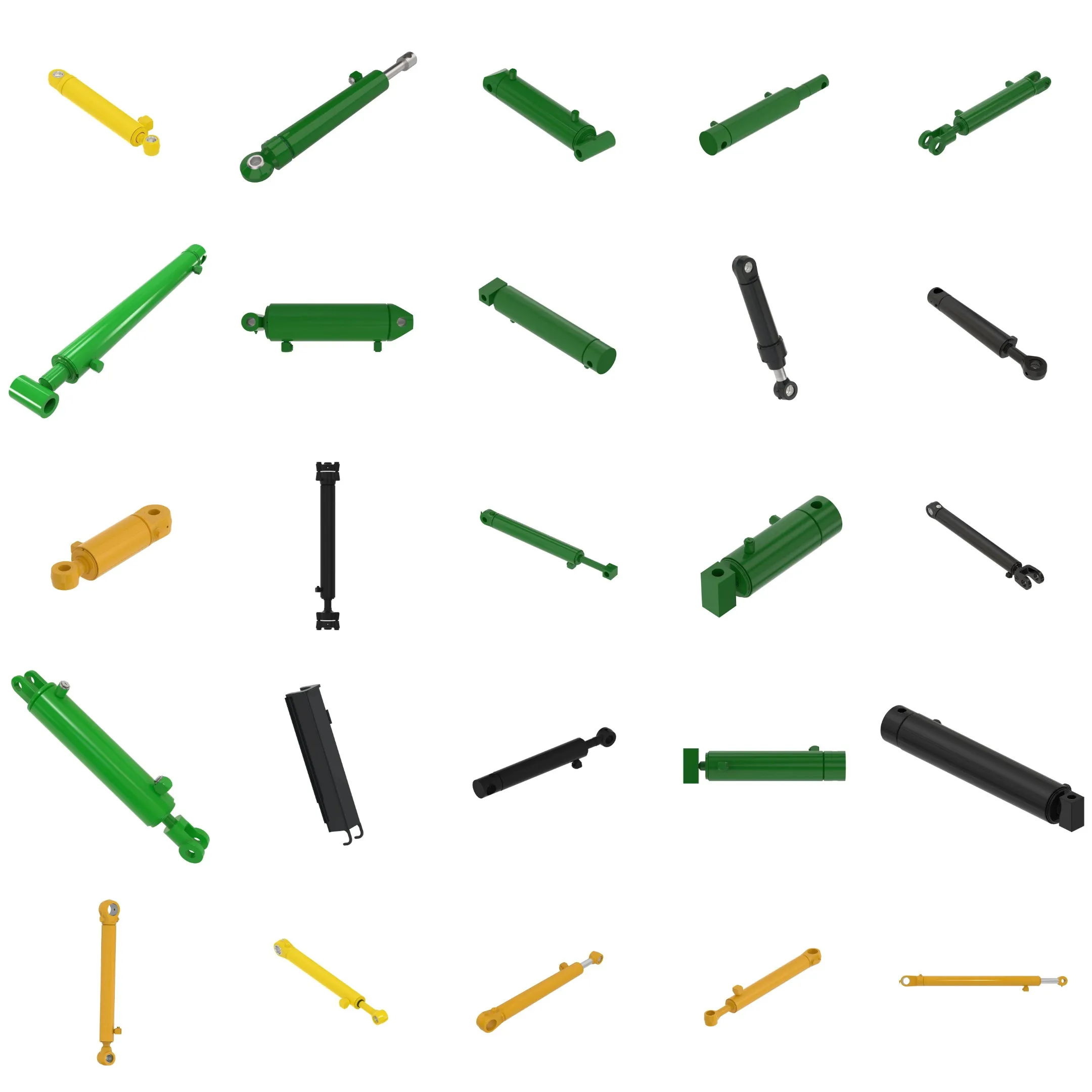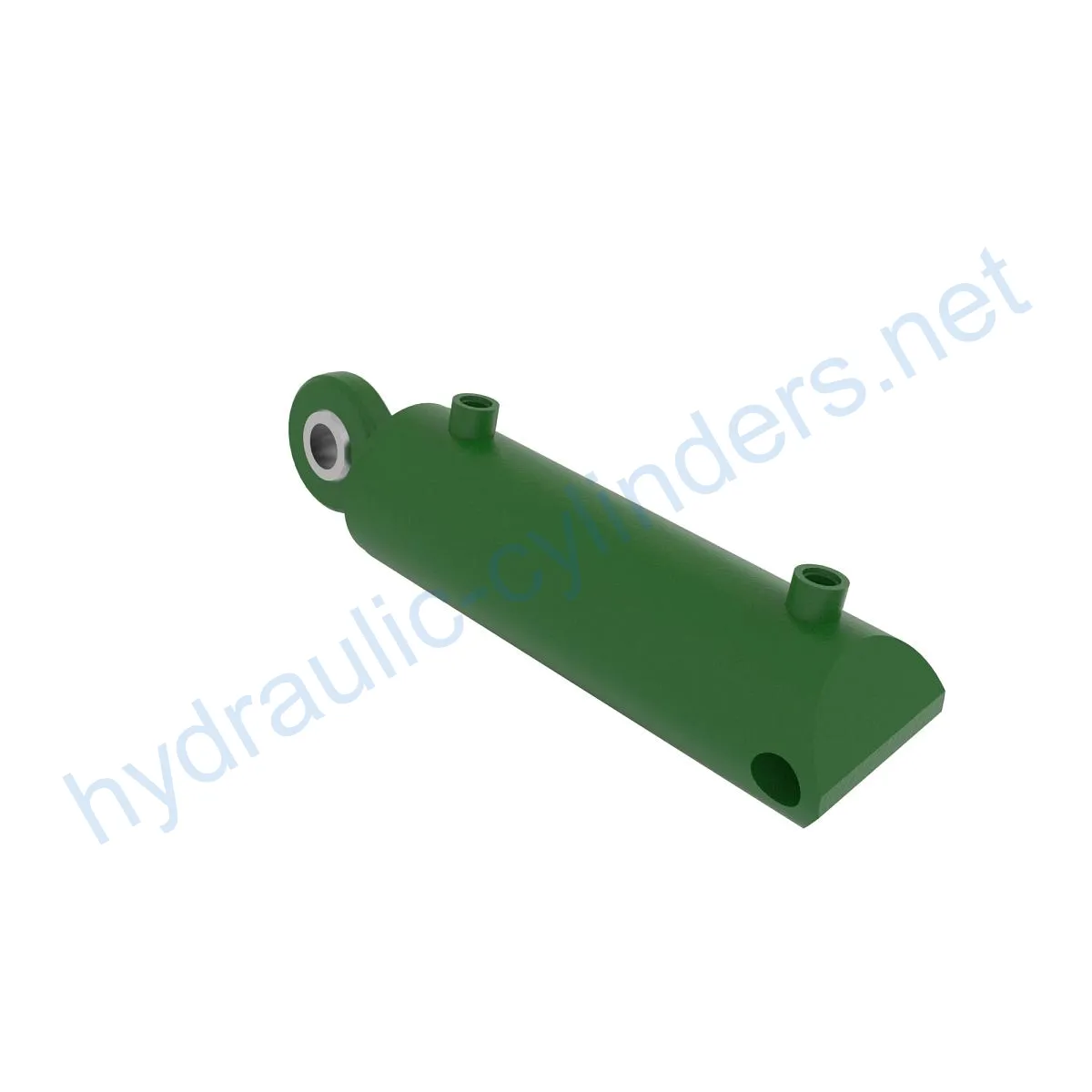Replacement Of AL216772 Hydraulic Cylinder
En tant que fabricant, fournisseur et exportateur de produits mécaniques, nous proposons des vérins hydrauliques et de nombreux autres produits.
N'hésitez pas à nous contacter pour plus de détails.
Courrier :sales@hydraulic-cylinders.net
Fabricant fournisseur exportateur de vérins hydrauliques.
Replacement Of AL216772 Hydraulic Cylinder
Product Introduction
The Replacement Of AL216772 Hydraulic Cylinder is a hydraulic component used in various machinery models, including 6R 230, 6R 250, 6230R, and 6250R. This hydraulic cylinder, weighing 31.88 lb with a height of 5.5 in and a length of 19.9 in, is designed to replace damaged or worn-out cylinders, ensuring optimal performance in a wide range of applications.
Specifications and Models
Specifications:
- Weight: 31.88 lb
- Height: 5.5 in
- Length: 19.9 in
Models:
- 6R 230
- 6R 250
- 6230R
- 6250R
Product Features
- Improved Equipment Performance: Replacing damaged or worn-out hydraulic cylinders restores the normal operation capability of the equipment, ensuring its performance in various applications.
- Enhanced Safety: Regular replacement of hydraulic cylinders reduces safety hazards caused by cylinder failures, ensuring the safety of operators and equipment.
- Overload Protection: New cylinder designs often incorporate better overload protection mechanisms, improving safety.
- Quick Installation: Modern hydraulic cylinders are designed for easy installation and replacement, minimizing downtime.
- Standardized Components: Many hydraulic cylinders are standardized products, making it easy to obtain replacement parts in the market.
Applications
- Excavators: Hydraulic cylinders in excavator booms or buckets may get damaged due to long-term use or overload, requiring replacement to restore normal operation.
- Cranes: Hydraulic cylinders in crane boom arms are prone to wear during frequent lifting and lowering processes, necessitating regular replacement for safety.
- Tractors: Hydraulic cylinders in front-end loader attachments of tractors can develop leaks or performance degradation from continuous lifting and tilting operations, requiring replacement.
- Harvesters: The hydraulic system of harvesters operates under high pressure, and cylinders may suffer fatigue damage, requiring timely replacement to maintain efficiency.
- Automated Production Lines: Hydraulic cylinders are used to control robotic arms and other automation equipment. Cylinder failures can impact production efficiency and should be promptly replaced.
- Die Casting Machines: Hydraulic cylinders in die casting machines may experience performance degradation under high pressure and temperature. Regular replacement ensures product quality.
- Mining Equipment: Hydraulic cylinders are used for lifting and moving heavy loads in mining equipment. Regular inspections and replacements are necessary to avoid equipment failures in harsh working environments.
- Bulldozers: The wear of hydraulic cylinders on bulldozer blades can lead to decreased pushing ability, requiring timely replacement to maintain operational efficiency.
Maintenance Tasks
- Regular Inspections: Periodically checking the hydraulic cylinder for any signs of wear, leakage, or damage is crucial in maintaining its performance and preventing unexpected failures.
- Proper Lubrication: Using appropriate hydraulic oil and lubricating the cylinder components according to the manufacturer’s guidelines helps ensure smooth operation and extend the cylinder’s lifespan.
- Seal Replacement and Calibration Checks: Timely replacement of worn-out seals and regular calibration checks help maintain the cylinder’s sealing effectiveness and overall performance.
Safety Considerations and Environmental Factors
When using hydraulic cylinders, it is important to follow safety measures to prevent accidents and protect workers. Additionally, considering environmental factors in the selection and use of hydraulic cylinders promotes sustainability and minimizes potential negative impacts.
Troubleshooting and Common Issues
- Leakage: Hydraulic cylinder leakage can occur due to damaged seals or other components. Inspecting and replacing faulty parts can resolve this issue.
- Slow Operation: If the hydraulic cylinder operates slowly, it may indicate a problem with the fluid flow or internal components. Checking for blockages and performing necessary repairs or replacements can improve performance.
- Noise or Vibration: Unusual noise or vibration during cylinder operation suggests potential mechanical issues or misalignment. Identifying and addressing the root cause can prevent further damage.
- Inconsistent Movement: If the cylinder exhibits inconsistent movement or fails to extend or retract smoothly, it may be due to internal component wear or fluid contamination. Inspection and appropriate action should be taken to restore proper functionality.
Fault Handling and Preventive Measures
When troubleshooting hydraulic cylinder issues, it is important to provide guidance and solutions to effectively diagnose and resolve problems. Offering preventive measures helps minimize potential issues and maintain optimal performance.

Product Design Considerations and Selection Criteria
In terms of design considerations, the Replacement Of AL216772 Hydraulic Cylinder is designed to withstand high loads, provide effective sealing, offer durability, ensure safety, and facilitate maintenance. Each of these aspects is essential for optimal performance and longevity.
Sealing and Lubrication
The hydraulic cylinder incorporates various sealing elements such as piston seals and rod seals made from wear-resistant materials like polyurethane and nitrile rubber. The cylinder body and threaded ends undergo fine finishing to enhance wear resistance. Regular lubrication with the appropriate amount of hydraulic oil ensures smooth operation and longevity.
Regular Inspections and Preventive Maintenance
Proper installation, lubrication, and adjustment are crucial for the optimal performance of the hydraulic cylinder. Providing guidance on aligning the cylinder correctly during installation, recommending the use of suitable installation brackets for securing the cylinder, and suggesting inspection, repair, and replacement procedures can help improve the cylinder’s lifespan. Additionally, offering replacement parts and rebuilding services further enhances the longevity of the hydraulic cylinder.
Safety Considerations and Environmental Factors
Considering safety measures when using hydraulic cylinders is of utmost importance to prevent accidents and ensure the well-being of operators. Environmental factors should also be taken into account when selecting and using hydraulic cylinders to minimize any potential negative impacts on the environment.
Troubleshooting and Common Issues
When troubleshooting hydraulic cylinder faults, it is important to provide instructions and solutions to effectively diagnose and resolve problems. This helps readers efficiently address issues and suggests preventive measures to minimize potential problems.

About Our Company
Visitez notre usine de RV :
Visitez notre usine de RV avec les éléments suivants
Vérin hydraulique Application :


